A day in the life of an oak tree, from mistle thrush in the morning to mice at midnight
Among their deceptively inert branches, trees shelter feathered Pavarottis, scuttling beetles, opportunistic fungi and fierce owls. John Lewis-Stempel recounts a day in the life of an oak and the creatures that call it home.

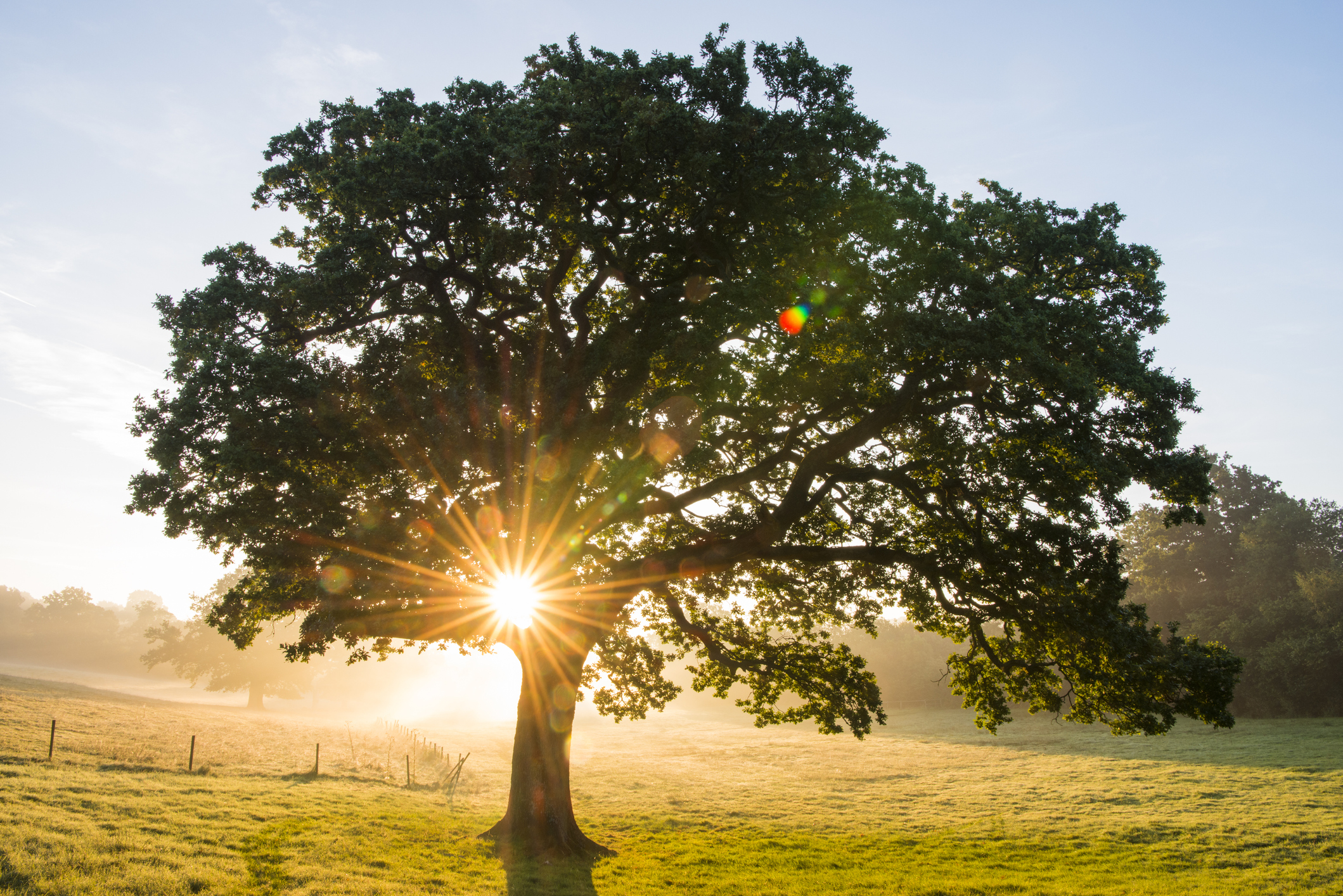
Our friends the trees have an unremarkable life, or so it seems to us. They come into leaf, their fruit drops, or is gorged on by birds and the winds of autumn strip them of their dressing to leave them as the cold, bare sentinels of winter.
However, if we were to stand, tree-like ourselves, in a British copse and watch a single oak tree for an entire 24 hours — say when spring hatches out of winter — what would we see?
6.17am
First light. The male mistle thrush flies to the top of the oak dome and sings: Pavarotti in feathers, the valley his auditorium. On a branch just below, the thrush is joined by the great tit, who similarly likes a high post to ‘ring his bell’. The mistle thrush breeds early and, halfway down the 60ft tree, snug in a dim fork, is its bowl-nest with four speckled blue eggs.

7.01am
The slanting rays of morning sun first catch the 1,000 leaf buds in the canopy, then the high untidy drey of the grey squirrel, before illuminating the ground beneath our 300-year-old oak. There, as Robert Bridges versed it: ‘Thick on the woodland floor Gay company shall be,/Primrose and Hyacinth And frail Anemone.’ Hyacinth here is the bluebell, lying in a mauve pool.
The leaves of autumn, brought down by the screaming Halloween wind, still lie around the tree in a thick sodden copper mat; the mould is soft on the pads of the returning vixen as she slinks down into her den among the tree’s roots, a rabbit clamped in her jaws from her night prowl. A present for her cubs.
In the brightening of the day, the birds and animals that have roosted in the tree emerge from their lairs; the pipistrelle bats from a hollow branch, the wren from under the ivy crawling up the immense trunk. Early morning is the great feeding time of diurnal birds and to the oak fly a great spotted woodpecker, nuthatch and a treecreeper. The latter climbs our venerable Quercus robur in a spiral, inspecting the multitudinous cracks in the bark of trunk and limbs for insects; she is immediately lucky and a Clubiona brevipes spider, which has overwintered under the tree’s rough, hard skin, falls victim to her tweezer-precise bill. The fissures of the oak are, quite literally, crawling with creepy-crawlies; in total, 1,178 invertebrate species use it and 257 of them rely solely on this tree.
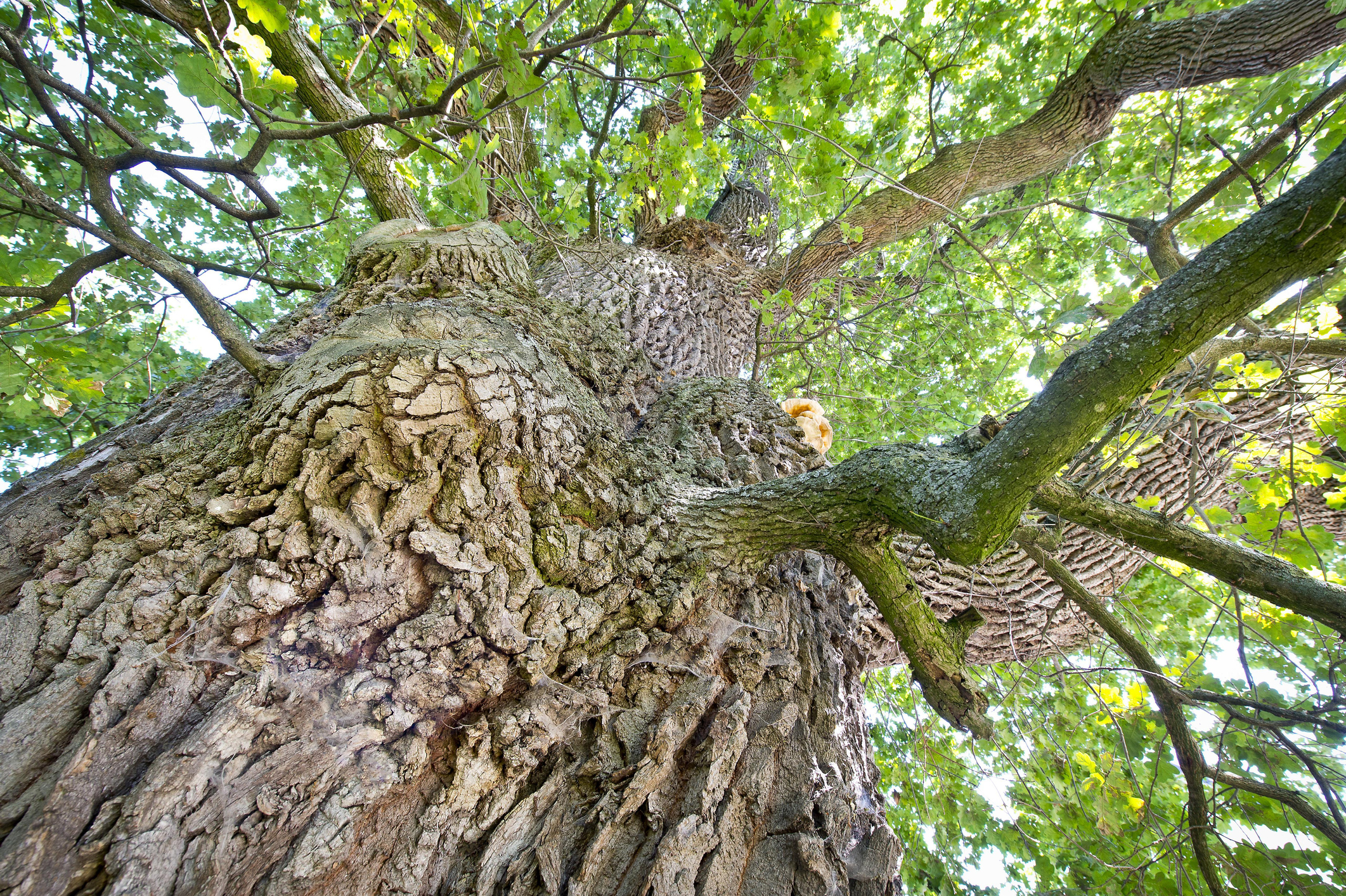
10.39am
A waft of warm, light, spring wind brings the first of the summer migrants, the chiffchaff, who returns to his familiar bough, to sing his song of only two tones: chiff; then chaff. As did the pied flycatcher, together with the redstart that is hot on her tail, the chiffchaff has timed his arrival to meet warm days and insect hatching. From a twig in front of the chiffchaff hangs a wooden bauble, as if left over from some primitive Christmas display: an ‘oak-apple gall’ is the most conspicuous result of an insect attack on the oak, caused by tiny wasps (Biorhiza pallida, Andricus quercuscorticis, Andricus kollari) chemically provoking the tree’s twigs to form a protective structure — the marble-like gall — around their eggs. Throughout the morning, a green woodpecker chisels a nest hole in a decay-ing sky-striving branch of our common oak, as a nuthatch, a bird almost as colourful as a kingfisher, plasters up a hole in the noble trunk with mud to make the correct-sized entrance. If we step back from the tree, even if it is still only in leaf-bud, it glows green in the sunshine.
Exquisite houses, the beauty of Nature, and how to get the most from your life, straight to your inbox.
12.18pm
It starts raining; on the lee side of the tree, a fallow-deer buck takes shelter, his back to the rain-blackened trunk. On the perennially wet west side, enough mossy, verdant vegetable matter has collected in the bark’s fissures for a polypody fern to grow as readily as in soil. The oak is parasite paradise, opportunist opening; lichens, liver- wort, moss, algae and fungi all have their hold on the tree. A whip of wind brings down a rotten bough, soon to be the abode of the oak click beetle.
Into the open socket wound on the tree, a floating spore of the bracket fungus Laetiporus sulphureus (‘chicken of the woods’) gains purchase. An oak supports 108 different types of fungi, above and below ground; the root system of the tree needs a network of mycorrhizal fungi to gather nutrients. The fruiting bodies of these mycorrhizae, among them oak orange bolete and oakbug milkcap, may poke up through the dense leaf carpet during summer and autumn.

2.22pm
The rain stops and the buck ambles off to munch on the reachable leaf-buds of a nearby oak sapling. In the ensuing sunshine, the oval leaf-buds of our oak unfurl, to the joy of numerous species of hungry grub and caterpillar; no fewer than 100 different moth types have been recorded as feasting on oak leaves, perhaps the commonest being the green oak tortrix. The fresh leaf growth of spring also attracts aphids, which then produce their sugary secretion, ‘honeydew’; a black line of wood ants is ascending to the very top of the tree in search of this nectar. As the ants climb up, a grey squirrel is heading slowly down a 45˚ limb, alert and tense; it can hear the tiny cheeping of chicks in the hole-nest of the marsh tit, which despite its name favours trees for its home.
4.44pm
In the circle of ground beneath the spreading oak tree, a jay is gulping down the last acorns from its winter larder, a crude hole in the earth at the base of the trunk; jays are particularly partial to acorns, hence the second part of the birds’ scientific name, glandarius, meaning exactly that, ‘eating acorns’. Inside some of the acorns is a protein bonus, the larva of the acorn weevil, an improbable long-nosed character more suited to a Disney cartoon than tooth-and-claw real Nature.
Oaks are ‘monoecious’, having both male and female flowers on the same tree; these ‘catkins’ are catnip to a visiting female bullfinch and to the emerged caterpillars of the purple hairstreak butterfly (an oak specialist, thus Favonius quercus, the adult of which floats about the canopy in summer). The pollen of the catkins is sweet on the proboscis of the oak-mining bee, too.
5.16pm
The ecology of the oak tree is a game of consequences: the newly emerged leaves of the oak are eaten by the pale-green caterpillar of the wintermoth, which, in turn, feeds the blue tit, whose brood has just hatched in yet another of the tree’s cavities; the sparrowhawk, terror of the copse, flashes between the tangled branches, to catch and feed on the blue tit.

7.59pm
In the white sunset, the mosses and lichens that clothe the bark of the trunk gain a subtle beauty; more than 700 different lichens inhabit the oak’s rough tessellated bark; the most conspicuous of these strange symbiotic beings, part fungus, part alga, is Ramalina farinacea, which resembles the antlers of the fallow buck who used the tree as shelter earlier in the day.
8.16pm
Under the darkening silhouette of the tree, a woodcock comes patrolling through the shadows, probing with its long bill down through the copper top of the leaf litter into the black mulch below; a stag beetle burrowing through the rotting leaves is luckless and gulped down. A flat-backed millipede suffers the same fate.
10.30pm
Around the cupola of the moonlit tree, pipistrelle bats swirl in pursuit of moths. At the base of the tree, in the mouth of the fox den, two cubs play roly-poly.
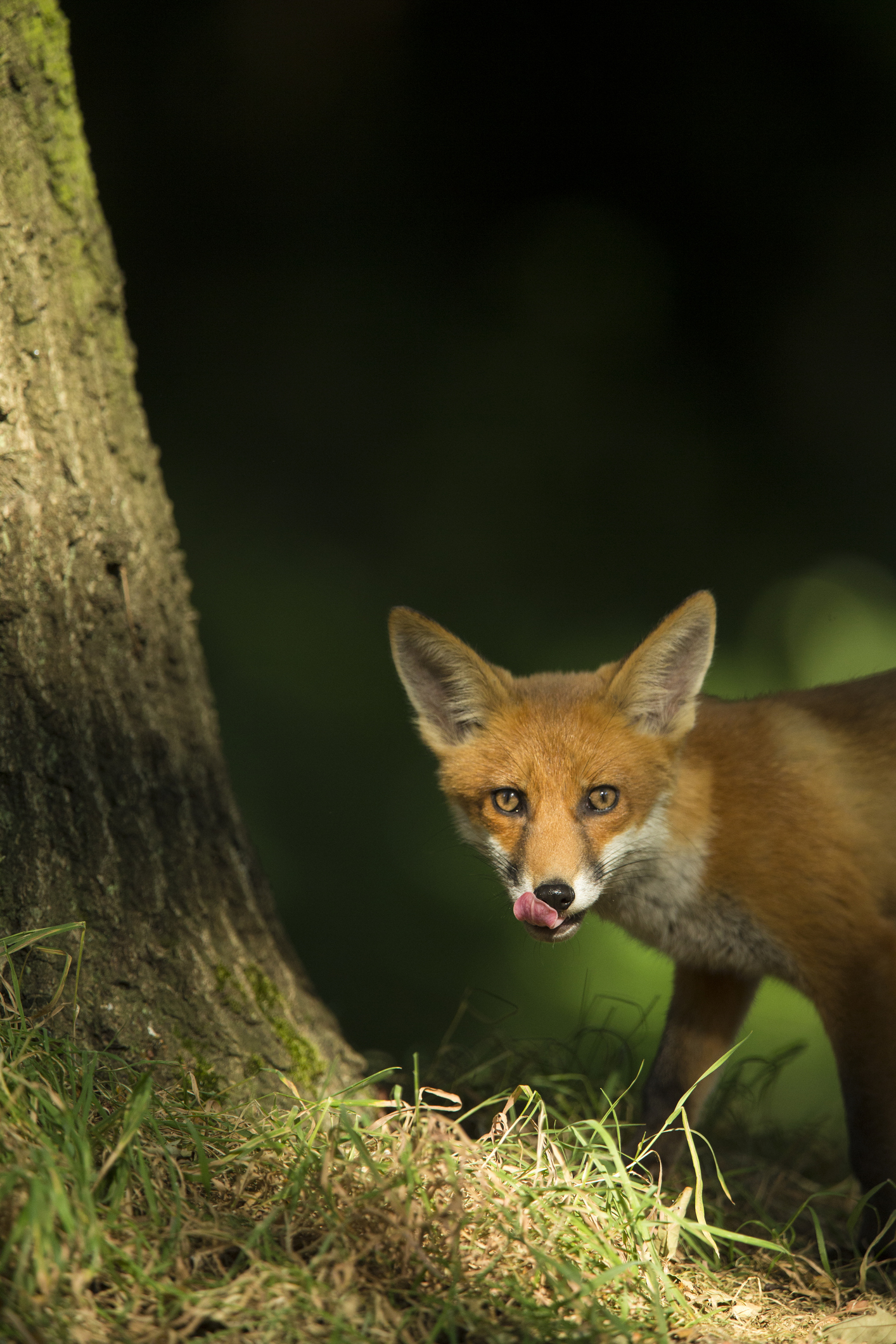
Midnight
A shambling badger, almost invisible in the willow pattern of dark and light, stumbles on the last of the jay’s acorn trove; Brock’s clumsy, bear-like pawing dislodges an oak bracket fungus at the base of the tree. Meanwhile, on a low crooked branch, a tawny owl sits as still as a stump. She is listening to the pitterings and patterings of the small mammals, the shrews and the mice, as they scour the floor beneath the oak for invertebrates and the acorns that the jays, the squirrels, the badgers and the wood pigeons have overlooked. A wood mouse holds up an acorn as a prize, then feels the talons of the owl on its neck. The wood mouse’s death shriek is an old sound under the oak in the copse.
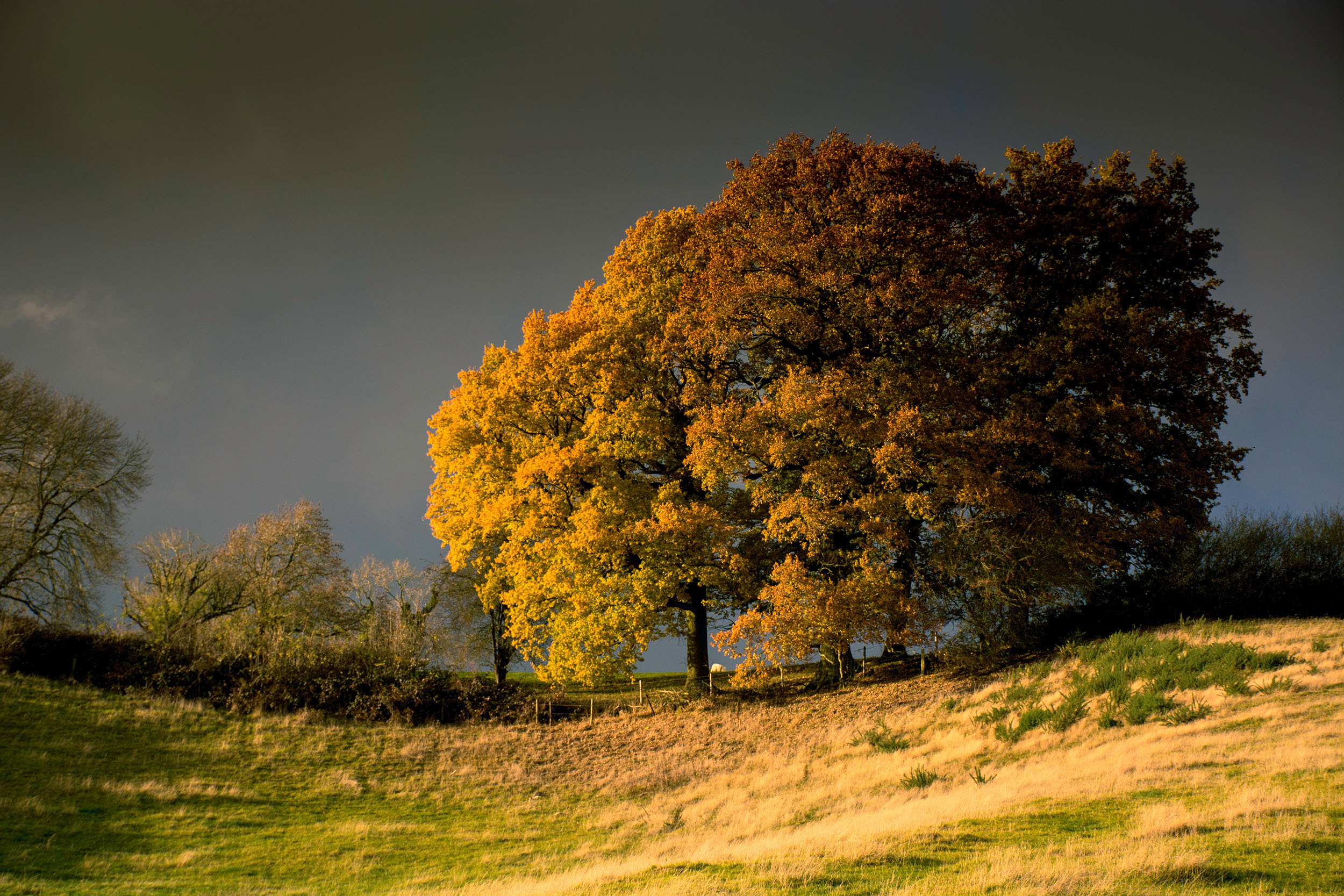
Credit: Alamy
The life of the oak tree collector: 'You soon see there’s only one sensible course of action: collect the lot'
For tree-loving landowners who want to leave their mark, nothing beats planting your own quercetum. Mark Griffiths celebrates the mighty
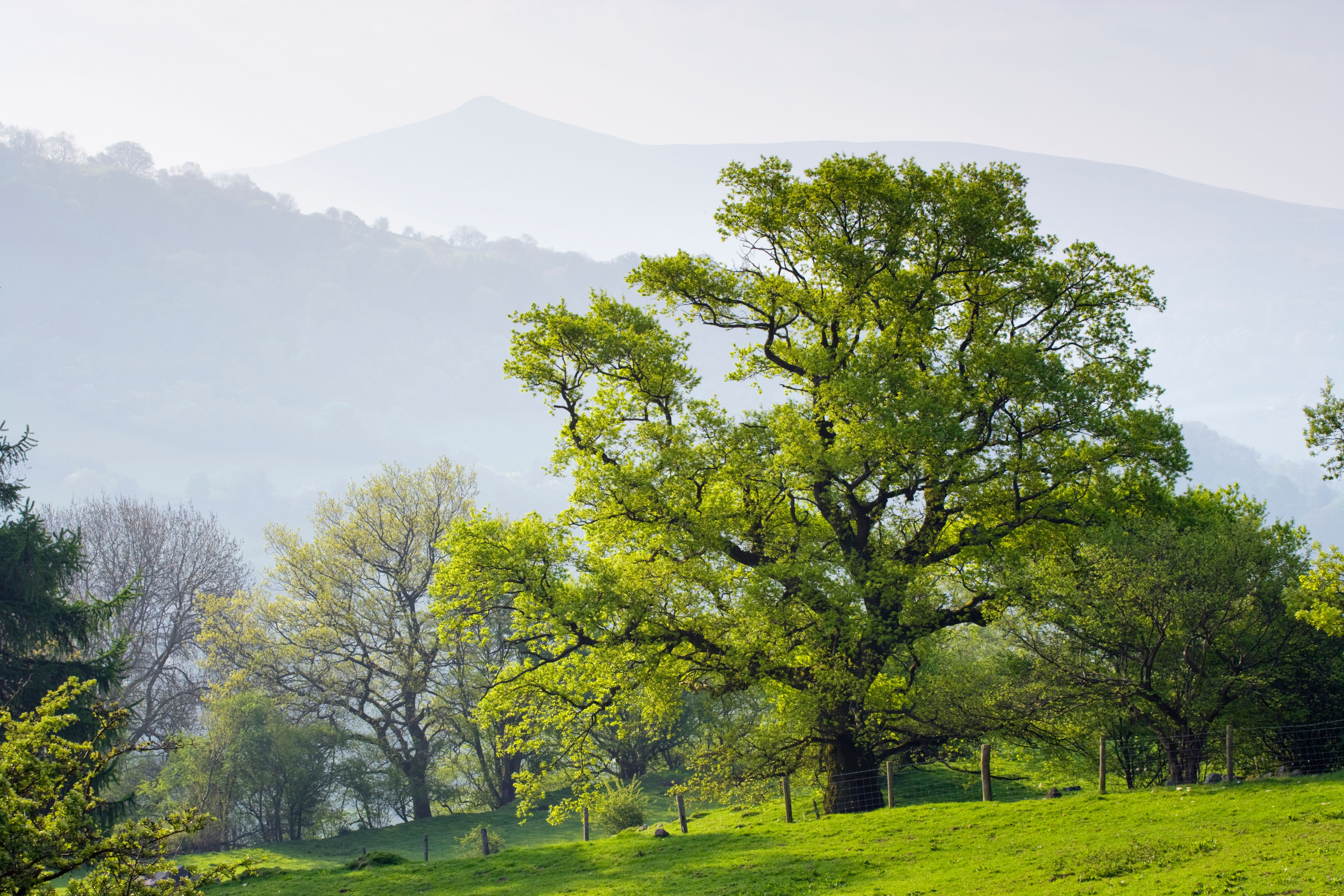
Credit: Alamy Stock Photo
Country Life Today: How an oak tree can reveal 800 years of environmental history
In today's news round-up, oak trees are used as 'a natural archive of climate information', relentless rain sparks warnings and
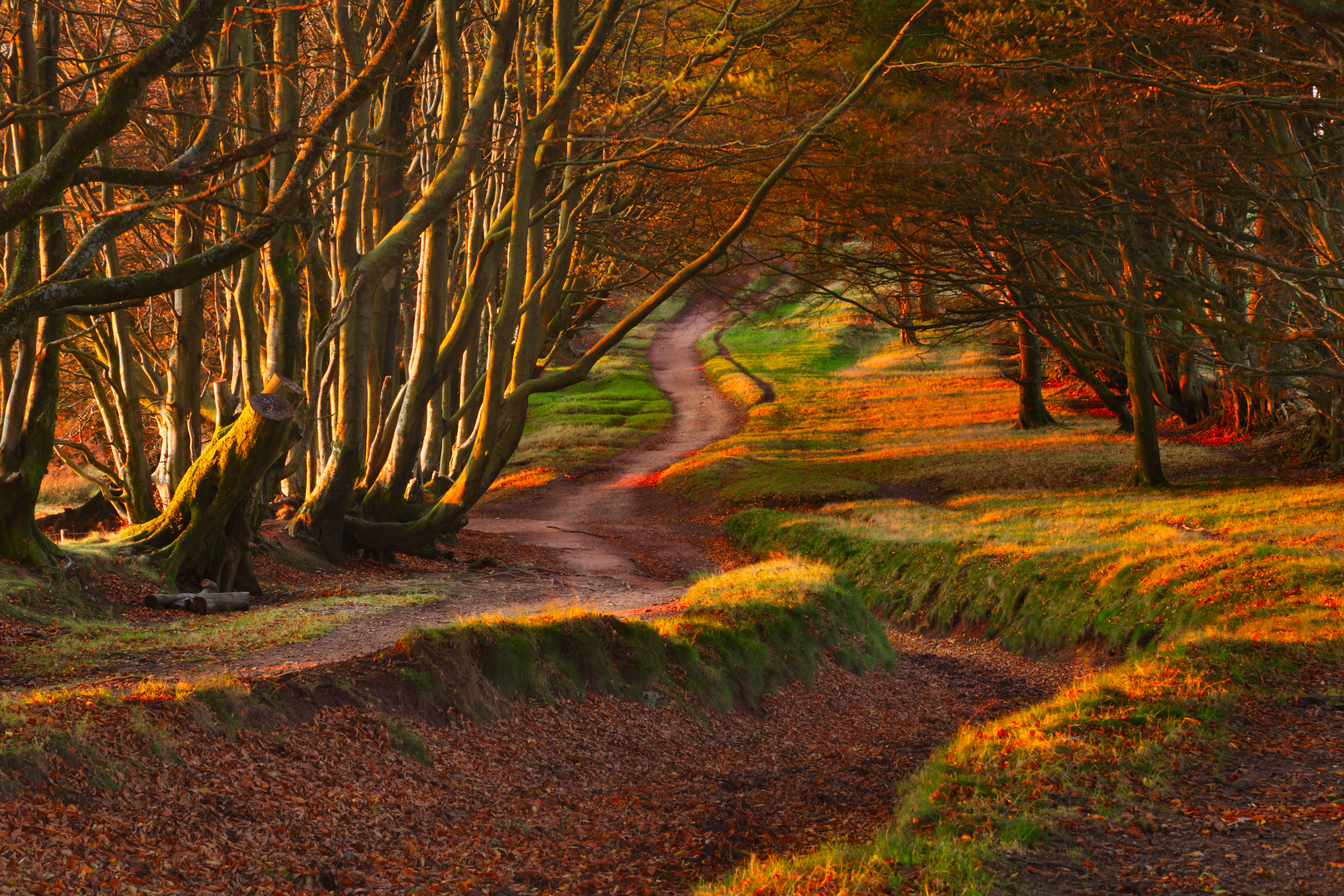
Beech trees: A complete guide
The beech tree is one of the finest sights in British woodland: effortlessly tall and graceful, offering year-round colour in
